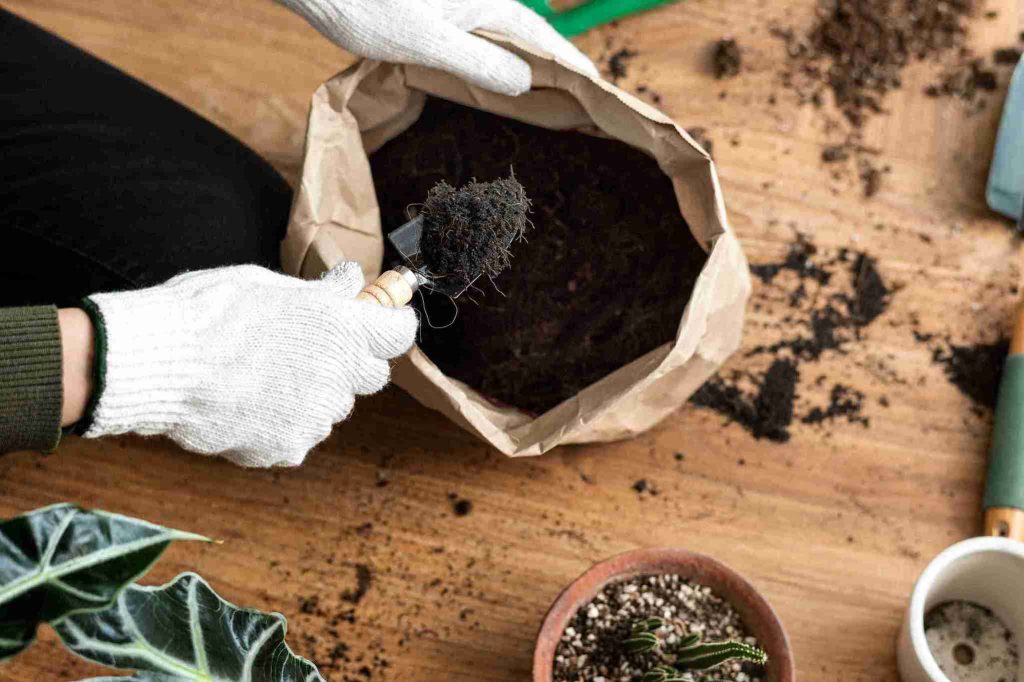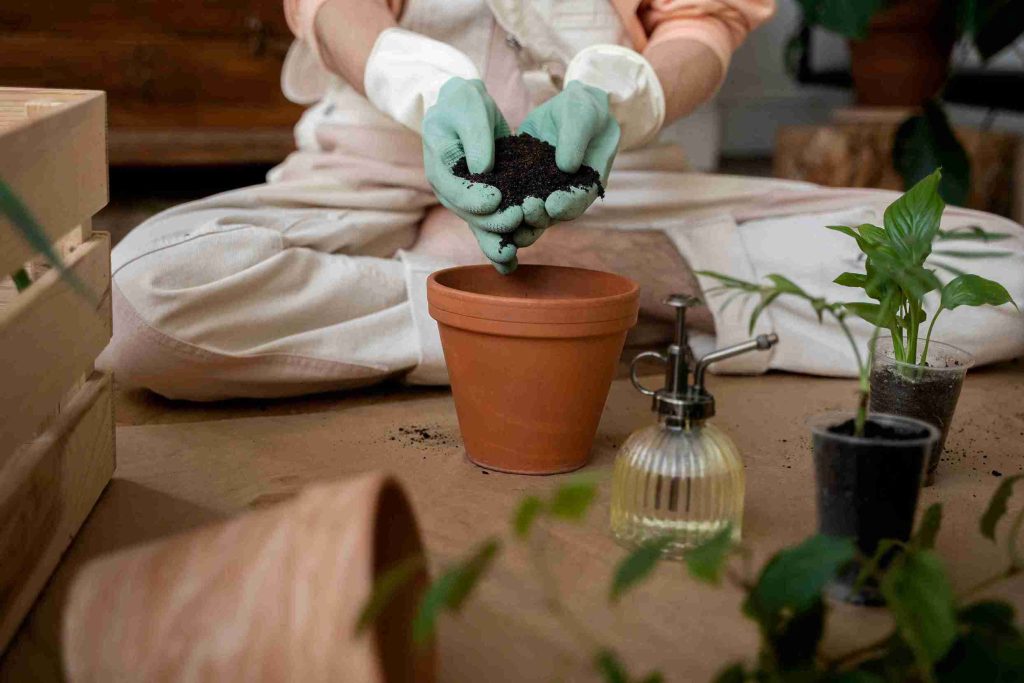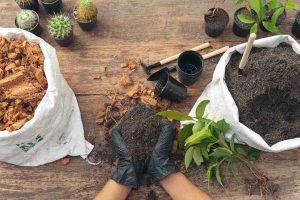When I first started growing houseplants, I didn’t pay much attention to the soil. I thought all plants could live in the same kind of dirt. But over time, I realized that each plant has its own needs, and choosing the right soil mix can make a huge difference.
I remember how some of my plants didn’t grow well, and I couldn’t figure out why. After doing some research, I learned that the best soil mix for indoor plants depends on what each plant needs. Some plants love well-drained soil, while others need more moisture. Some thrive in sandy soil, and others need something richer.
Now, I always choose the right soil for each plant. It’s not just about the look; it’s about helping them grow strong and healthy. In this article, I’ll share what I learned about the best soil mix for different houseplants and how you can give your plants the best home.

The Importance of Choosing the Right Soil Mix
When I first started taking care of houseplants, I didn’t think much about soil. I used whatever I had around. But then, I noticed some plants weren’t growing well. Their leaves were yellow, and they didn’t look healthy. I realized that soil plays a huge role in plant health. I started doing more research on the best soil mixes.
Each plant needs a specific type of soil. The right soil helps plants grow strong and healthy. Some plants like their soil to drain quickly. Others prefer it to hold moisture. I learned that understanding each plant’s needs is important. Some plants need light, airy soil. Others need a heavier, denser mix. Now, I pay close attention to the type of soil I use.
I make sure to match it with the plant’s needs. I also make sure to check the soil regularly. I want my plants to grow strong and thrive. I feel proud when I see them healthy and vibrant. It all starts with choosing the right soil. My plants are doing so much better now.
Best Soil for Succulents and Cacti
Succulents and cacti are some of my favorite plants. I love their low-maintenance nature. But I learned that they need very specific soil. If the soil holds too much water, they can rot. At first, I used regular potting soil for them. Big mistake! The roots started to rot, and the plants died. I quickly learned that succulents need fast-draining soil.
Now, I use a mix of regular potting soil, sand, and perlite. This mix allows water to drain easily. It helps the roots breathe and prevents water from sitting at the bottom. I also make sure the container has good drainage holes. The mix is light and airy, perfect for the roots to grow. I’ve had much better success since switching to this soil.
My succulents now look vibrant and healthy. They grow fast and rarely get sick. I’ve even started growing more types of succulents. The right soil made all the difference. Cacti also love this mix. I feel good knowing I’m giving them what they need to thrive. Now, I’m always careful about using well-draining soil for these plants.
Soil for Ferns and Tropical Plants
I’ve always loved ferns and tropical plants. They bring a touch of nature to my home. But keeping them healthy isn’t as easy as I thought. I learned that these plants need soil that can hold moisture. Regular soil dries out too quickly.
After trying a few mixes, I found the best one. I use a combination of potting soil, peat moss, and perlite. The peat moss helps the soil retain moisture. This is perfect for ferns, which love a bit of extra water. The perlite keeps the soil light and helps with drainage. The mix is rich and well-aerated, allowing roots to grow strong.
Tropical plants like the peace lily and snake plant also thrive in this soil. I noticed that their leaves stay lush and green. They don’t dry out as quickly, and they’re happier overall. I’ve also started adding a bit of orchid bark for extra texture. It gives the soil a nice balance between moisture and air. My ferns are much healthier now, with no signs of dry tips. The tropical plants are thriving, too. I love seeing them grow strong and lush.
Soil for Herbs and Vegetables
Growing herbs and vegetables indoors has been a rewarding experience for me. Fresh basil, mint, and even small tomatoes are now part of my kitchen garden. But I learned that herbs and vegetables need soil that drains well but also holds enough moisture. I used to use just regular potting soil, but it didn’t work as well.
I started using a mix of compost, perlite, and potting soil. The compost provides nutrients that help the plants grow strong. The perlite helps with drainage so the soil doesn’t get too soggy. I also like to add a little bit of sand to the mix for extra texture. This mix has worked wonders for my herbs and veggies. The soil holds moisture, but it never gets too wet.
My plants have healthy roots, and they grow fast. I make sure to fertilize them every few weeks to keep them growing strong. Herbs like basil, oregano, and parsley do especially well in this mix. I also use this soil for small vegetable plants, like lettuce. The plants have a healthy green color and produce so much. I’m proud of how well my herbs and vegetables are growing.
Soil for Orchids
Orchids are one of my favorite houseplants. They’re beautiful, but I learned that they need very special soil. Regular potting soil doesn’t work well for orchids. I used to struggle with keeping them healthy, but then I discovered orchid bark. Orchid bark allows the roots to get enough air. I mix it with perlite to make it light and airy.
I also use a bit of sphagnum moss to help retain moisture. The combination keeps the orchid’s roots healthy and happy. I always make sure to use a well-draining pot with drainage holes. Orchids like to dry out a little between waterings, so the mix helps with that. I’ve had much better luck with my orchids since switching to this soil.
They’ve grown bigger and bloom more often. The flowers last longer, and the plants are healthy. I also make sure not to overwater them. The right soil has made all the difference. I feel proud of my orchids when they bloom, and I know I’m giving them what they need.
Soil for African Violets
African violets are delicate but beautiful plants. I love the vibrant flowers they produce. However, I found that these plants need a special soil mix to thrive. Regular soil tends to be too dense for them. I use a mix of peat moss, vermiculite, and perlite. The peat moss helps retain moisture, which African violets love.
The vermiculite keeps the soil light and helps with air circulation. The perlite ensures that the soil drains well. This mix keeps the roots healthy and prevents overwatering. I’ve noticed that my African violets grow faster and bloom more. They’ve also been free of pests since I switched to this soil mix.
I’ve also made sure to use a shallow pot, as African violets don’t like deep pots. The mix helps the roots grow without being waterlogged. I love seeing them bloom, with beautiful flowers of every color. African violets need careful care, but the right soil has made a huge difference. They’re doing much better now, and I’m excited to see more blooms.
Soil for Aloe Vera and Other Succulent Varieties
Aloe vera is one of my favorite succulents. It’s easy to care for, and I use it for its healing properties. However, I learned that aloe vera needs a very specific soil mix. I use a combination of cactus soil, perlite, and sand. The cactus soil provides the perfect base, while the perlite helps with drainage.
The sand adds extra texture and keeps the soil from getting too compact. Aloe vera roots need to be able to breathe, and this mix helps with that. I make sure the pot has plenty of drainage holes. This soil mix helps prevent root rot, which is a common issue with aloe vera. I’ve seen a huge difference in how my aloe vera plant grows.
It’s now larger, greener, and much healthier. The soil mix helps the plant get the right amount of moisture without staying too wet. I also use this mix for other types of succulents. The plants are thriving, and I’m happy to have found the right soil. Aloe vera has become much easier to care for since switching the soil mix. I recommend this for anyone who grows succulents.
Organic Potting Soil for Indoor Plants
I’ve always preferred using organic potting soil for my indoor plants. Organic soil provides a healthy environment for my plants to thrive. It contains natural materials like compost, peat moss, and coconut coir. These ingredients help retain moisture while also improving drainage. I love how organic soil encourages beneficial microorganisms to grow.
These microorganisms help break down nutrients, making them more accessible for the plant. The texture of organic soil is loose, which promotes better root development. I’ve noticed that plants in organic soil grow stronger and healthier. It also doesn’t contain harmful chemicals or synthetic fertilizers, which I prefer. Organic soil helps keep my indoor plants safe from toxins. I make sure to choose a high-quality organic potting mix for my plants.
The soil should be light and airy, allowing roots to breathe. It should also provide enough moisture without staying too wet. Over time, I’ve learned that organic soil helps my plants grow more naturally. It’s especially important for long-term plant health, and I swear by it for my indoor gardening.

How to Make DIY Potting Soil Mix
Making my own DIY potting soil mix has been a game-changer. I start by combining equal parts of peat moss and perlite. This helps with moisture retention and provides good drainage. Then, I add a bit of vermiculite for better aeration and water retention. I also mix in compost or organic matter for nutrients. This addition helps feed the plant over time. Sometimes, I include a small amount of coarse sand to increase drainage.
I make sure all the ingredients are thoroughly mixed together. The consistency should be light and loose, not compacted. Before using the mix, I always check its texture to ensure it’s right. If I want the mix to be more acidic, I add some pine bark.
For a more neutral pH, I skip this step. Once my mix is ready, I fill the pots with it, leaving space for the roots. DIY potting soil gives me control over the quality of the soil. I’ve found that my plants thrive in this homemade mix, especially over time. Making my own soil mix has saved money and kept my plants happy.
How to Improve Drainage in Houseplant Pots
I’ve learned the importance of proper drainage in houseplant pots. When I first started, I didn’t pay much attention to drainage. Over time, I noticed some plants struggling due to excess water. Now, I make sure every pot has drainage holes. If a pot doesn’t have them, I drill small holes myself. To further improve drainage, I added a layer of gravel at the bottom.
This layer allows excess water to flow freely and prevents root rot. I also use a well-draining potting mix to complement the drainage. If the mix retains too much moisture, it can still cause problems. For plants that need even more drainage, I place the pot on a tray with pebbles. This elevates the pot and allows water to escape.
I’ve found that improving drainage keeps my plants healthy and happy. It’s a simple step that makes a big difference in plant growth. I always check the drainage conditions before repotting to ensure proper care. Good drainage is crucial for preventing waterlogging and encouraging healthy roots.

What to Add to Heavy Potting Soil for Aeration
I’ve encountered heavy, compacted potting soil before, and it wasn’t ideal. To fix this, I added materials to improve aeration. First, I mix in perlite, which loosens the soil and improves airflow. Perlite is lightweight and helps the soil stay fluffy, which is perfect for roots. I also add vermiculite to help with moisture retention and aeration.
If the soil is especially dense, I mix in coarse sand. The sand improves drainage and reduces soil compaction. Sometimes, I use coconut coir, which is a great alternative to peat moss. Coconut coir helps aerate the soil while retaining moisture. If I want to go further, I add compost to enrich the soil.
The organic matter in compost not only adds nutrients but also improves soil structure. I make sure to mix everything thoroughly to create a balanced soil texture. By improving aeration, the plant roots can breathe and grow stronger. I’ve found that this makes a huge difference in my plants’ health, particularly for those with delicate roots. Adding these materials ensures the soil is well-drained and ideal for plant growth.
How to Choose the Right Soil pH for Houseplants
Choosing the right soil pH for my houseplants has always been important. I know that different plants thrive in different pH levels. To determine the right pH, I first check the plant’s needs. Some plants prefer acidic soil, while others do better in alkaline conditions.
For most houseplants, I aim for a neutral pH, around 6.5 to 7.0. I use a pH test kit to check the soil before planting. If the pH is off, I adjust it by adding amendments. To lower the pH, I add sulfur or peat moss. These materials make the soil more acidic, which works well for acid-loving plants. To raise the pH, I use lime or wood ash, which makes the soil more alkaline. I’ve also learned that some plants, like succulents, prefer slightly alkaline soil.
I make sure the soil is well-suited to each plant’s specific needs. Once the pH is balanced, my plants grow better and stronger. Maintaining the right pH keeps my plants happy and thriving, preventing nutrient deficiencies or toxic buildups. Choosing the right soil pH has been essential for my plant care routine.

Conclusion
Choosing the right soil mix is one of the most important steps in plant care. I’ve learned this through trial and error. The right soil can make all the difference in how a plant grows. I’ve found that each plant has specific soil needs, and it’s worth taking the time to get it right. Now, I always make sure to use the best mix for each plant.
My plants are thriving, and I’m more confident in my care. Whether it’s for succulents, ferns, or herbs, the soil is key. I’ve learned that it’s not just about watering; it’s about providing the right environment. After all, plants are living things that need proper care. The soil I choose helps them grow and thrive. I love seeing my plants healthy and strong. It
FAQ
Best soil mix for houseplants
A well-draining mix with peat, perlite, and vermiculite works best. This allows roots to breathe and prevents waterlogging.
Organic potting soil for indoor plants
Organic potting soil contains natural ingredients like compost and bark. It provides essential nutrients for healthy indoor plant growth.
Ideal soil for tropical houseplants
Tropical plants need a soil mix that’s light and well-draining. Use a mix with peat, perlite, and pine bark.
Lightweight soil for potted plants
Choose a soil mix with perlite or coconut coir for lightness. It helps prevent compacting and improves drainage.
Soil mix for beginner plant parents
A simple mix of peat moss, perlite, and compost works well. This provides a balance of moisture retention and drainage.
Best soil for succulents and cacti
Use a sandy, well-draining mix for succulents and cacti. A mix of cactus soil and perlite is ideal for these plants.
Orchid potting mix ingredients
Orchid mixes usually contain bark, perlite, and sphagnum moss. These ingredients ensure good air circulation around the roots.
Soil mix for monstera plants
Monstera plants thrive in a well-draining mix of peat, perlite, and orchid bark. This provides good airflow and moisture retention.
Aroid soil recipe for philodendrons
Philodendrons prefer a mix of peat, perlite, and orchid bark. This helps create the ideal moisture balance and drainage.
Carnivorous plant soil requirements
Carnivorous plants need a soil mix with peat and sand. Avoid fertilizers, as these plants thrive in nutrient-poor soil.
DIY cactus and succulent soil recipe
Combine 3 parts potting soil, 2 parts perlite, and 1 part sand. This creates a well-draining mix for cacti and succulents.
Best ingredients for houseplant soil mixes
Peat, perlite, compost, and vermiculite are great ingredients. They offer a good balance of drainage and moisture retention.
Step-by-step guide to making potting soil
Mix equal parts of peat, perlite, and compost. Add extra sand or bark for a lighter, well-draining soil mix.
Soil mix to prevent root rot in indoor plants
Use a well-draining mix with perlite and sand. This prevents water from sitting around the roots, reducing rot risk.
Best soil amendments for houseplants
Add perlite for drainage or compost for nutrients. These amendments improve soil structure and plant health.
What to add to heavy potting soil for aeration
Add perlite, sand, or orchid bark to heavy soil. These ingredients improve aeration and help prevent compaction.


